
Orientalism in Venetian Art
Orientalism in Venetian Art
Featured Photo by Cristina Gottardi on Unsplash
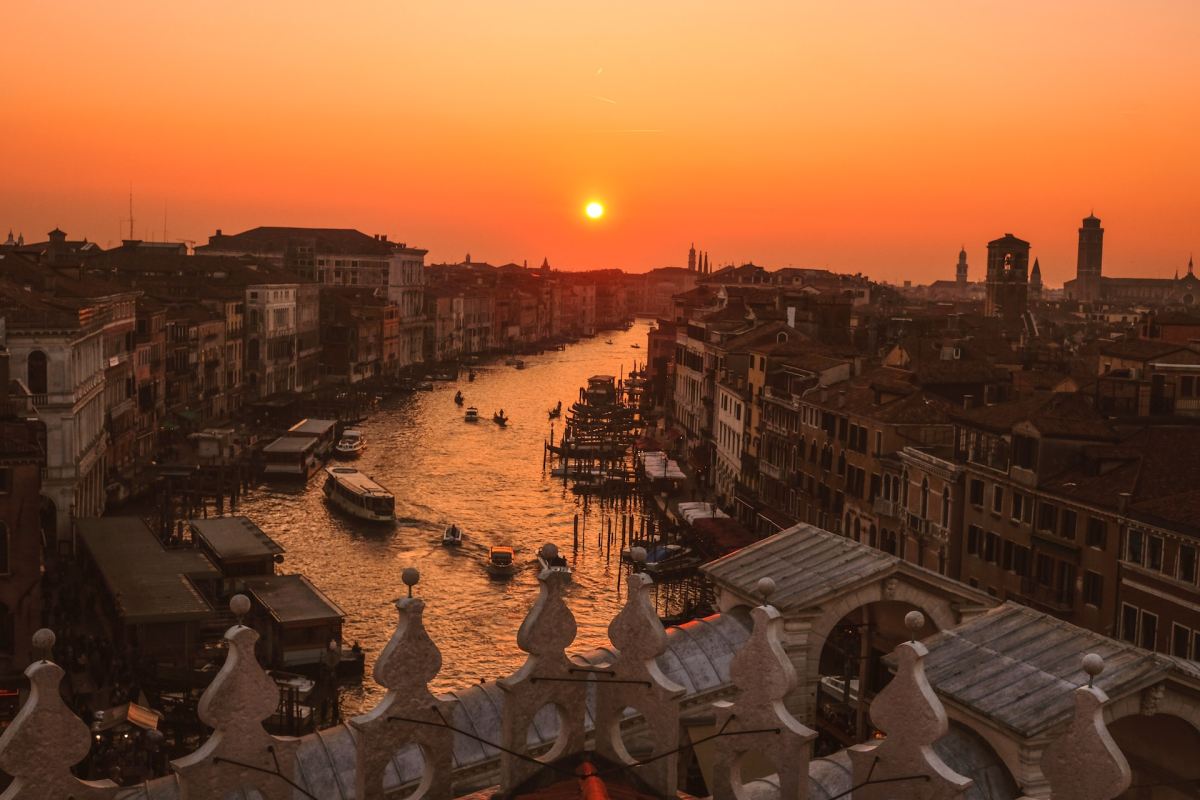

Orientalism in Venetian Art
Orientalism in Venetian Art
Featured Photo by Cristina Gottardi on Unsplash
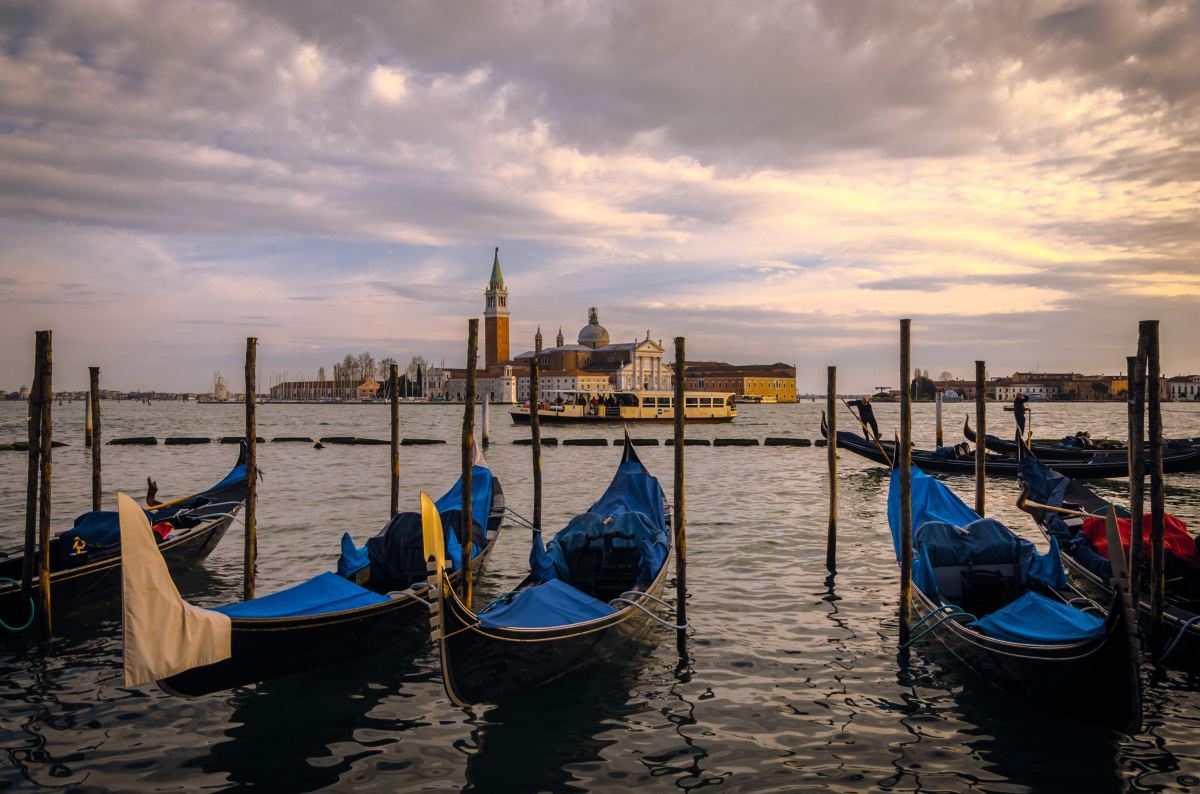
I’ve been to Venice twice, but neither time have I ridden a gondola or disembarked from a cruise (or embarked on one, for that matter). On my first trip to Venice, I flew to Marco Polo Airport and then hopped onto an Ali Laguna vaporetto to hop off at San Samuele.
On my second trip, I took a bus from Marco Polo to the bustling Piazzale Roma where I met my daughter who was there serving an internship at the 2019 Venice Biennale.
So although I still have not ridden a gondola, they continue to fascinate me…
It’s possible, as one walks alongside a canal, to glance up from your thoughts and be surprised by one gliding by, silent and serene, mere footsteps away.
It is also possible to be flabbergasted by the gargantuan size of a cruise ship as it lumbers through the lagoon.
Similar to New York City’s new Super Tall skyscrapers, they appear gawky, out of place, and — with last summer’s near cruise ship collision, — dangerous and unnecessary. This two-minute video shows the mammoth size of one of these cruise ships as it creeps along the Zattere waterfront promenade in the Dorsoduro sestiere.

Last week, my daughter ordered this beautiful cookbook, A Table in Venice: Recipes from My Home, by Skye McAlpine from Amazon. Its 287 pages showcase 100 recipes from Venice and the greater lagoon.

The book’s preface titled “My Venetian Pantry” (her first must-have staple is amaretto biscuits) precedes six chapters such as “Sweet Breakfast Recipes,” “Recipes for a Venetian Aperitivo,” and “Fish and Game from the Venetian Lagoon.” Each recipe is accompanied by down-to-earth commentary to guide you through replicating some of Venice’s most renowned local specialties.
In “Vegetable Recipes from the Rialto Market,” British author Skye McAlpine, @skyemcalpine, describes the frank personal service you’ll experience if you visit the iconic market.
For example, she writes on page 69…
“No vendor at the market will let you take a bag of artichoke hearts home without pressing into your hands a bunch of fresh parsley to fry in the pan with them.” Expect this gesture to be accompanied with detailed instructions for how to best prepare the produce as well.
A resident of Venice since the age of six, she suggests substitutions when needed. If a recipe calls for a certain type of radicchio that’s unique to the Veneto but hard to find elsewhere, she lets you know.
She writes on page 103, “If you can’t get hold of Tardivo radicchio, which can sometimes be tricky to source outside of Italy, then red chicory works well instead. It has a slightly different texture but a lovely, bitter flavor.”

Of course, the book sizzles with fabulous photography; however, it’s clear that the dishes are the star of the show. A photograph of “Gnocchi with cherry tomatoes and crab” on page 138, for example, shows the dish plopped on a plate without much overt styling.
The result? It’s not the cutlery, the plants in the background, or the vintage china you’ll want to stare at. Instead, like the towering campanile in Piazza San Marco, the Venetian foods dominate the table setting.
Featured Photo by Jakub Kapusnak on Unsplash

I took this picture of my daughter last June as she and I returned to Venice from a day trip to Bologna. In the distance, you can see Venice in the lagoon poised for the few remaining months of problematic mass tourism that remained in 2019.
It’s quite a reversal of affairs compared to Venice today when the city is coping not only with the COVID-19 quarantine, but also with the residual after-effects of the historic floods last November.
Best wishes for a speedy recovery, La Serenissima.

This unexpected mosaic tucked into a corridor in the San Marco sestiere of Venice, Italy will take your breath away. Even the wrought iron barrier is beautiful and provides a contrasting frame for this photo taken by my daughter in June 2019.
The design reminds me of a beautiful painting by the Venetian Renaissance painter Giovanni Bellini that you’ll find hanging inside the Basilica dei Santi Giovanni e Paolo. The basilica is located adjacent to the Venetian hospital Ospedale Civile.
The image on both the painting and the mosaic depicts the Christ child being carried by the patron saint of travelers Saint Christopher, a 3rd-century church martyr.


In June, my daughter and I took an afternoon in Venice to see the Jewish Ghetto located in the Cannaregio sestiere, in the north of the city. Two years earlier, on a previous week-long trip to Venice, I had wanted to see the ghetto, but ran out of time. Therefore, in June, it was still on my return trip bucket list.

Honestly, we didn’t plan this little jaunt well. We just took off for Cannaregio shortly after lunch on the last day of my visit. (She had the day off from her two-month internship at the U.S. Pavilion of the Biennale del Arte and wouldn’t be leaving for another month.)
So while I wish I had taken a guided tour offered by the Jewish Museum of Venice and was able to tell you more about Venice’s Jewish Ghetto—the first of its kind in the world—I’m still grateful that we spent the hour or so there.
Even so, with the recent flooding in Venice, the ghetto has suffered. Fortunately, the synagogues are located on top or upper floors. According to this article in The Jerusalem Post, a storage facility and kosher restaurant were damaged.
To find the ghetto, we used Google Maps, rode a vaporetto to the train station (the Ferrovia stop), and then wound our way through Cannaregio. We crossed a bridge, made a left alongside a row of shops bordering the canal, and walked right past an easy-to-overlook brick tunnel.
Following Google Maps, we turned around eventually, and wandered through that brick doorway. We followed the maze. Within a minute or two, we walked by a shop full of art prints and originals, a jewelry store, a book seller, a bakery.

After browsing through some lithographs and snapping a picture of the detailed sign above summarizing the history of the ghetto, we entered the Campiello de le Scuole, the “little square of the synagogues.” A seven-story building stood plainly before us. I have read since that this building demonstrates the tight quarters the Jewish people were contained in. Judging by the windows, these units couldn’t have contained standard 8-foot ceilings. In fact, these buildings were “the tallest buildings with the lowest-ceilinged apartments” in Venice, wrote David Laskin in this New York Times article.

We continued past this small square. Not more than one minute further into the labyrinth, we found ourselves in the main campo of the Jewish Ghetto, the Campo de Ghetto Nuovo. In the square, a dozen people mingled and conversed quietly. A small tour group gathered at the base of the Jewish Museum of Venice.
The afternoon was clear and sunny. And hot. It was the perfect day to tour cool and darkened museums and synagogues. But alas, we hadn’t planned well enough to do that. Perhaps on my next visit to Venice (I can’t imagine there’s not another one in my future!), I’ll plan better. In the meantime…
2. The English word “ghetto” is derived from the Jewish Ghetto in Venice, originating from the Venetian word ghèto and the Italian word ghetto, according to Chabad.org. The word “geto” in the Venetian dialect referred to a foundry, which was located nearby. Eventually, the word was used to refer to the area that contained the Jewish people.
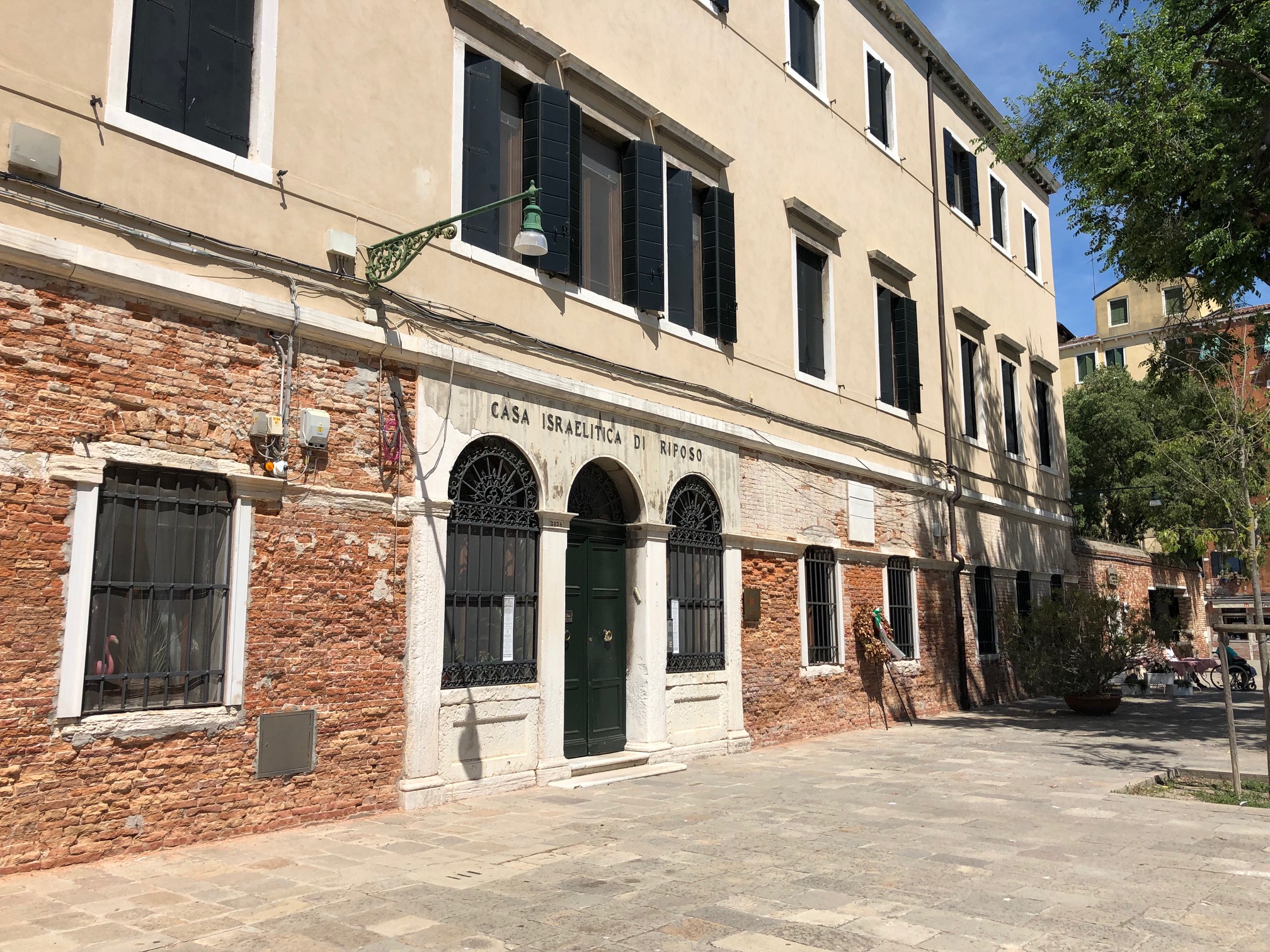
3. At its height, around 1650, the Ghetto housed 4,000 to 5,000 people in a space roughly equivalent to 2-1/2 city blocks. Later, in the years prior to World War II, about 1,300 Jews lived in the Ghetto. During the war, 289 were deported by the Nazis to Auschwitz and Trieste; only seven returned.
Today, about 450-500 Jews live in Venice. A small number still live in the ghetto.
4. During the ghetto’s early years, its residents were limited as to where they could travel and work. They also had to pay for their own watchmen and security. In addition, their clothing was used to mark them: men wore yellow circles sewn to their left shoulders of their clothing; women wore yellow scarves.

5. There are five active synagogues in the Jewish Ghetto today. To see the synagogues, one must sign up for public guided tours conducted by the Jewish Museum of Venice. Tours are scheduled every half hour starting at 10:30 and ending at 17:30. Tickets are 12 Euro each. Visit this website for more information.

The plaque below describes the above sculpture, titled The Last Train, created by sculptor and Lithuanian-Jew Arbit Blatas. The sculpture shows Jews being loaded onto cattle cars. I believe the top line on the plaque is a dedication of the sculpture by the Jewish community of Venice to those deported to concentration camps of Nazi Germany.

A composition of seven bronze sculptures depicts the atrocities inflicted upon the Jewish people during World War II. Close-up photos of three of these sculptures and the inscription plaques at far right are below.
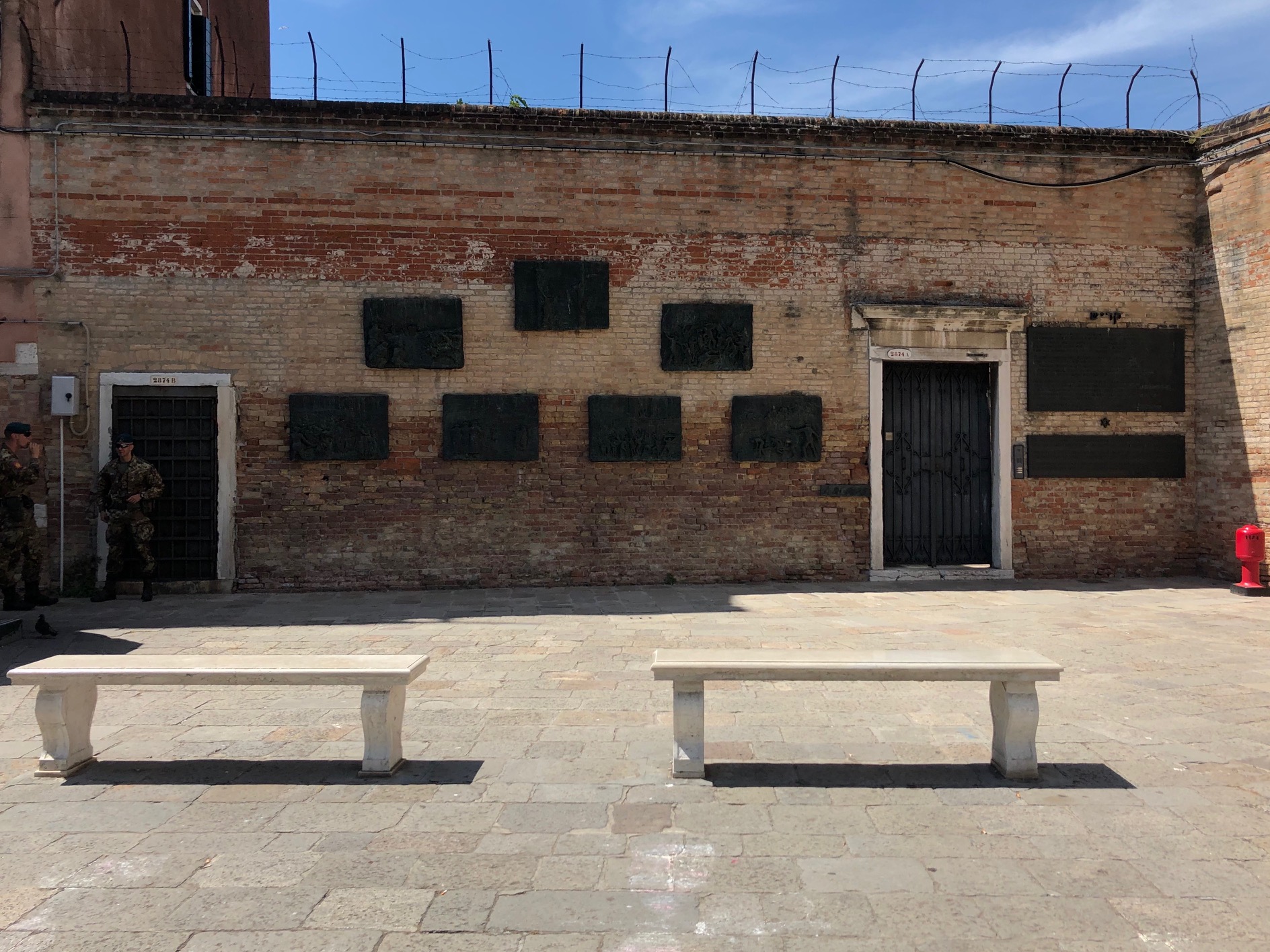




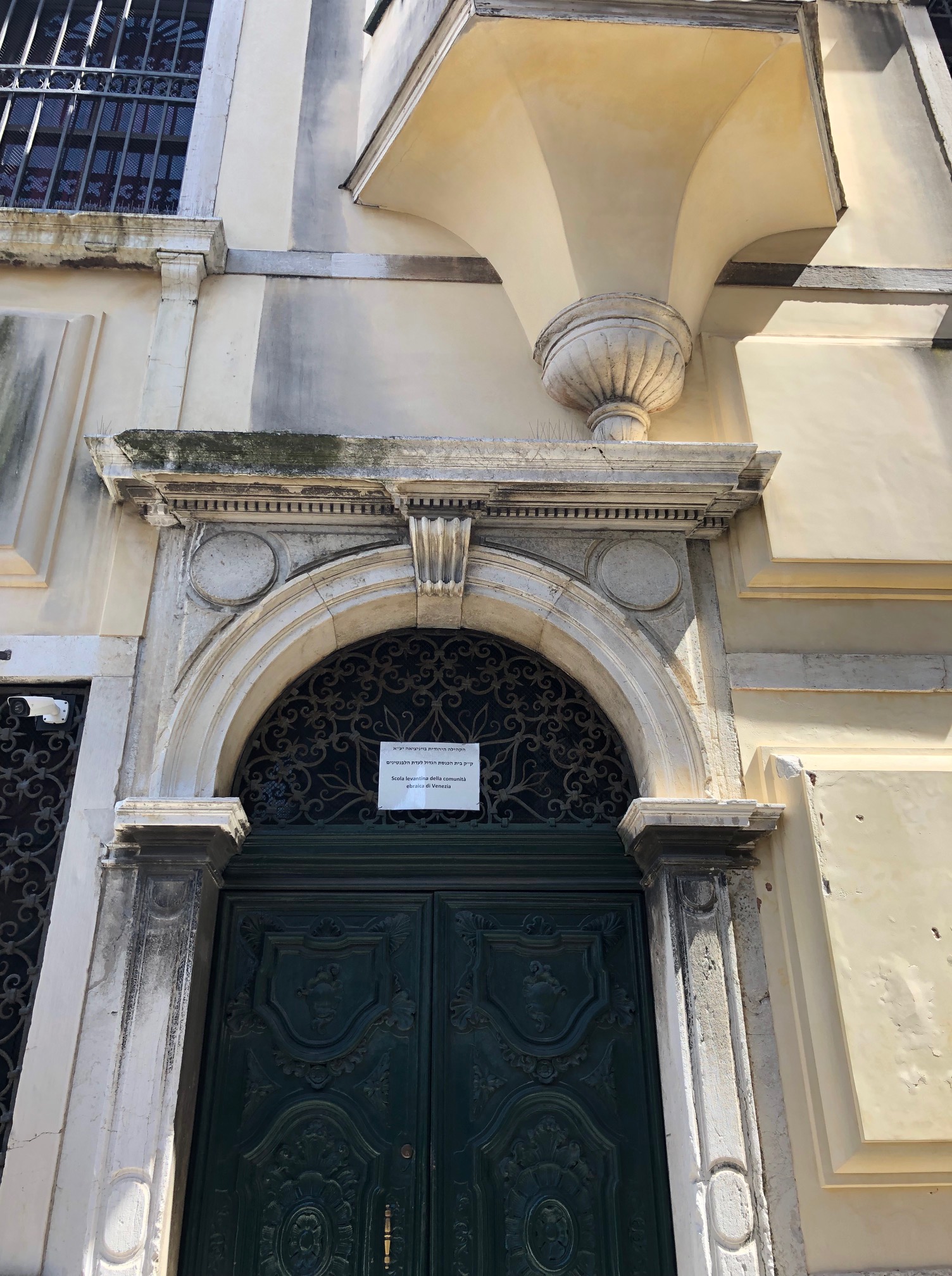


This past June, I returned to Venice, Italy for five days to visit my daughter who was serving an internship at the U.S. Pavilion of the 2019 Art Biennale. While there, my goal was to experience a few sights I had missed in 2017 when we visited while she served another internship at the Peggy Guggenheim Collection, a small modern art museum on the Grand Canal. (By the way, I plan to write a future post about her overall experience with the PGC internship. If you, your child, or your grandchild are interested in a career in art museum operations or administration, this paid internship is worth looking into.)
There were three Venice sights I missed seeing in 2017: 1) The Basilica of St. John and St. Paul (known in Italian as the Basilica dei Santi Giovanni y Paolo); 2) The Venetian Ghetto (where Jews were compelled to live starting in 1516 and the origin of the English word ghetto); and 3) The Constitution Bridge (known in Italian as the Ponte della Costituzione).
On the last full day of my visit in June, my daughter and I took a vaporetto to Cannaregio, the part of Venice where the Jewish Ghetto and the Ponte della Costituzione are located.
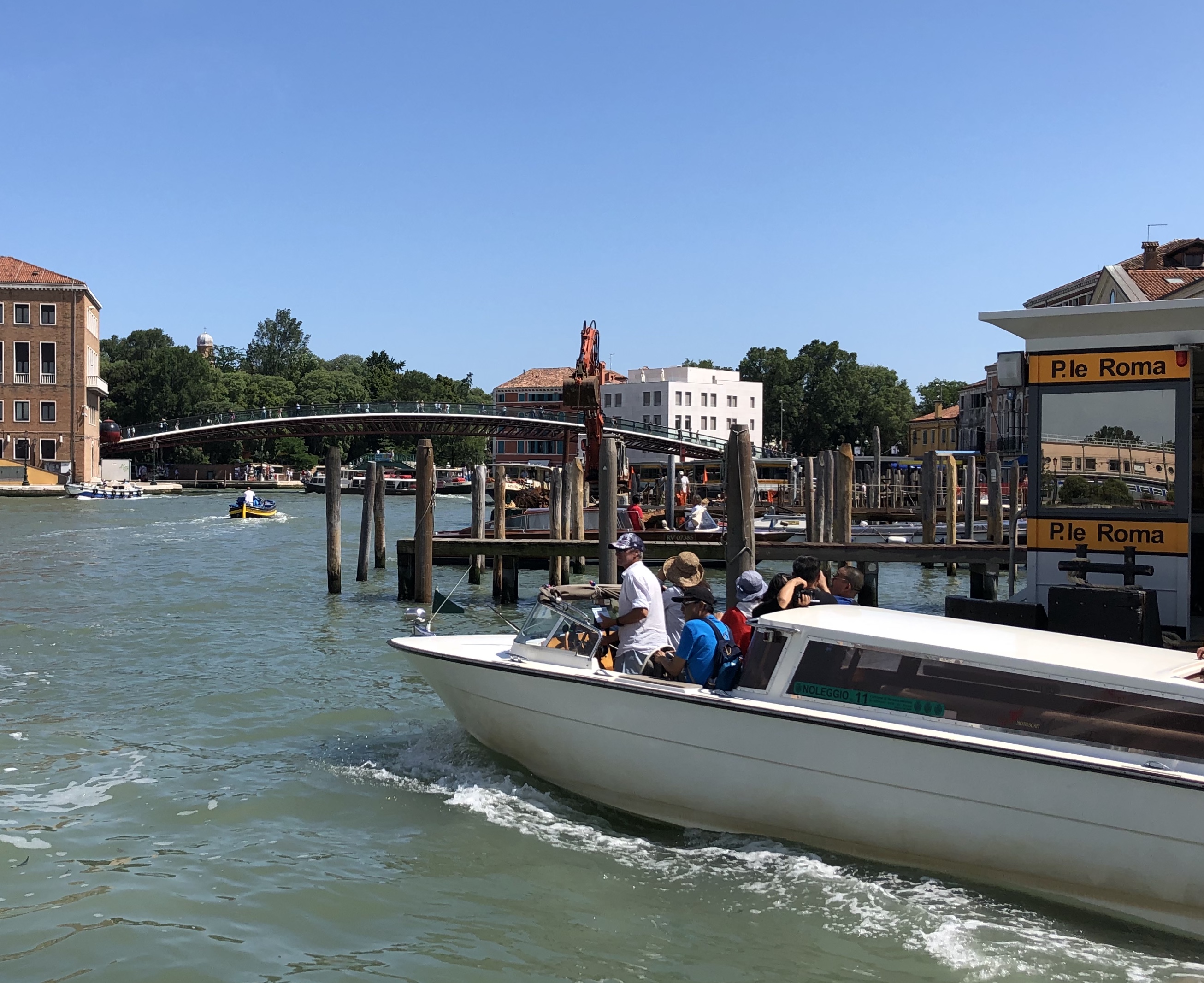
I had first learned of the famous bridge, one of four pedestrian bridges that cross from one side of the Grand Canal to the other, when I read The Politics of Washing: Real Life in Venice. This book, written by Venetian transplant Polly Coles, reveals the daily routines of ordinary Venetians who have made the lagoon city their home. (What’s it like to live in one of the most heavily touristed cities in the world? Read this book. Where are the schools, the hospital, the post office? Read this book.)
Within one chapter of her book, Coles tells of her own experience with the infamous pedestrian bridge designed by Spanish architect Santiago Calatrava.
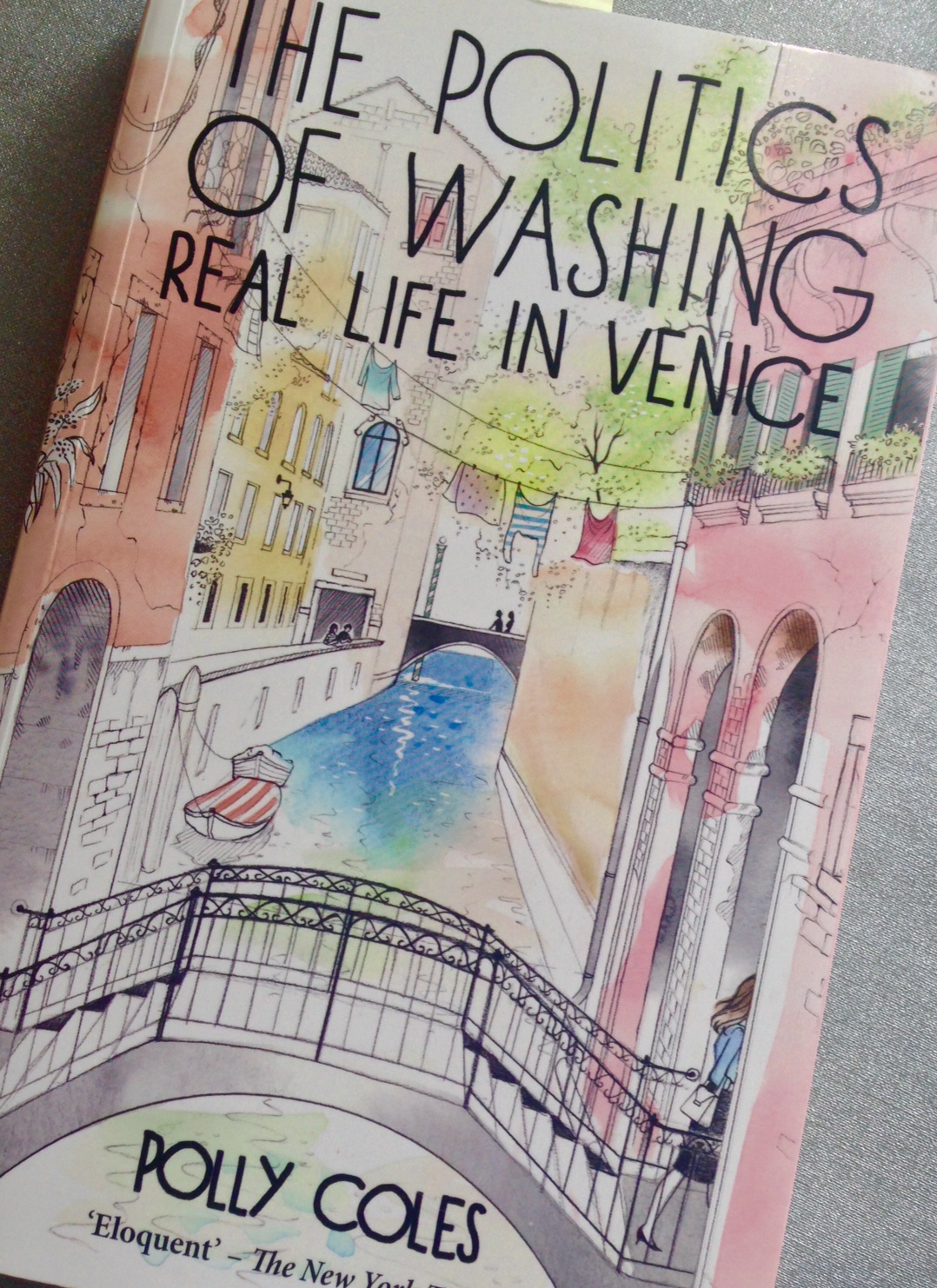
I first learned of Calatrava when we visited “Sculpture into Architecture,” a 2005 exhibition of the artist’s work at the Metropolitan Museum of Modern Art in New York City. The architect’s unusual skeletal forms intrigued me and still do today. For example, the Oculus transit hub near NYC’s One World Trade and the 9/11 Memorial & Museum is one of Calatrava’s more recent U.S. designs. The Oculus’ soaring bird-like structure is a fitting symbol of recovery and growth for the formerly devastated Ground Zero area.
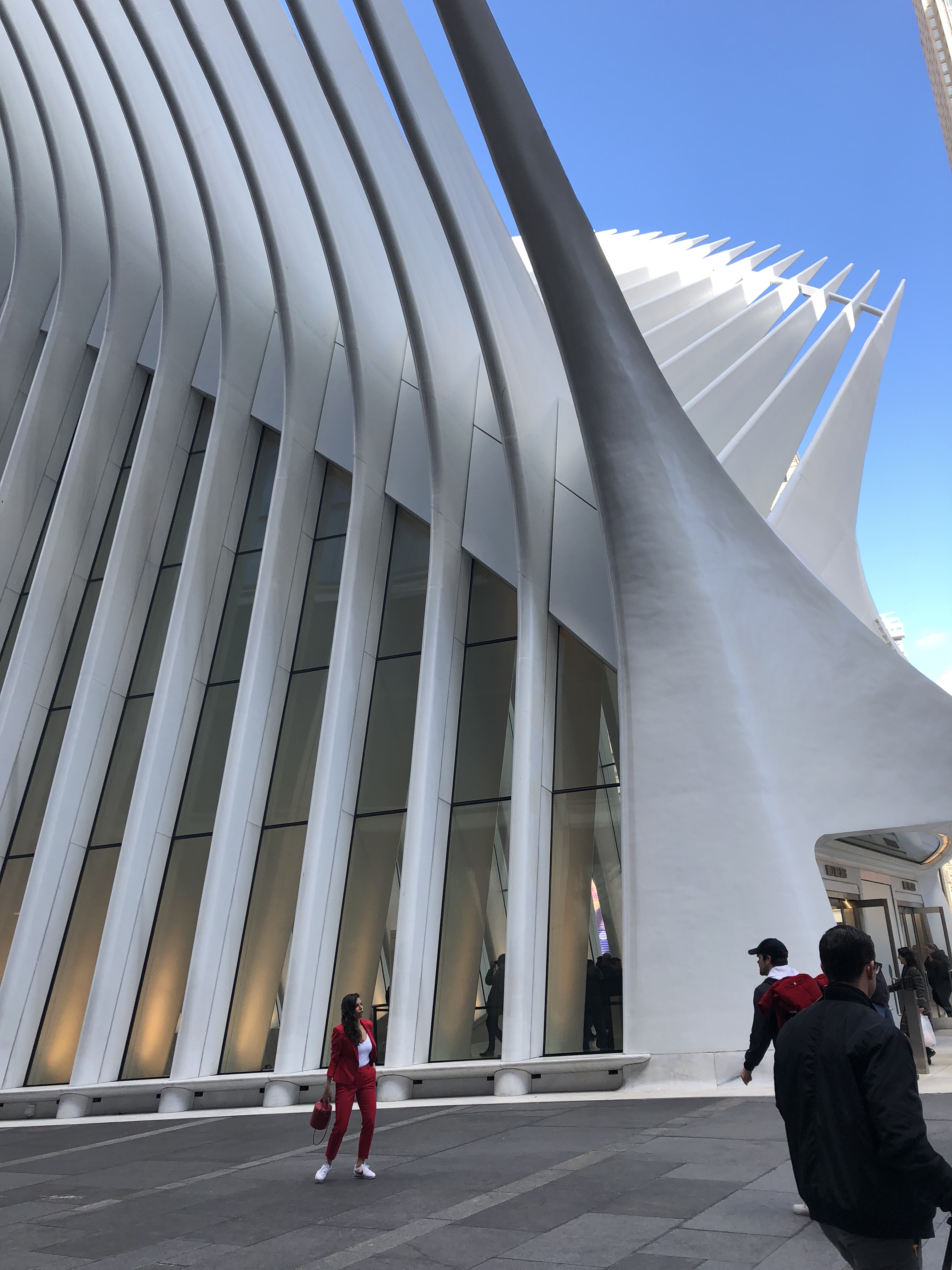
However in Venice, Calatrava’s bridge is a controversial piece of architecture that continues to gain attention today even though it was completed in 2008. Indeed, its troubles started long before the current ones. For example, during its construction, the bridge was budgeted to cost 7 million Euro, but wound up costing 11.6 million Euro. In addition, several delays were required during its construction.
Moreover, other problems have come to light since its construction and subsequent use. These have added to the bridge’s notoriety. Some of these problems include:

In addition to the slippery surface, because so many tourists (and residents, alike) carry wheeled luggage over the bridge, the glass panels have worn down, which has caused damage to the panels and to pedestrians alike, if they should fall.
So how was my walk across Calatrava’s Constitution Bridge?
Let’s just say that I was glad it was dry the day we ventured across… it was slick even then. (But let me tell you… the marble steps on nearly every other Venetian bridge are slick, too. On these bridges –and there are hundreds across the city– I had to take care to avoid the worn-down, curved edge of each step where I had nearly fallen more than once.)
On Calatrava’s bridge, there is a narrow walkway of another material (stone? concrete?) you can step across on. And truth be told, that optional surface was more comfortable to use even though it was only a strip the width of a narrow sidewalk positioned in the middle of the walkway, far from a handrail.
Its long arch gracefully extends across the canal. If you have the chance to take the lengthy stroll across it, do. Despite its controversy, the bridge is beautiful, simplistic, and a refreshing contemporary note amidst Venice’s historic facades.
It is also officially crossed off my bucket list. Been there. Done that.

It just wasn’t as elaborate as I thought it would be, I thought as I surveyed the interior of Venice’s Basilica dei Santi Giovanni e Paolo. Yes, it was beautiful, just not as beautiful as I expected for a “Top 10” ranking in the little book about Venice I had at home.
A sign at the door had notified us of a 3.50€ entrance fee to enter. My daughter and I both agreed that this view from the doorway would suffice. After all, we had been in many other Venetian cathedrals or basilicas.
Just two days before, we had ventured inside the Chiesa di Santo Stefano in the San Marco sestiere. The previous day, we had taken loads of photos inside Basilica di San Petronio in Bologna. The next day, a second tour inside Saint Mark’s Basilica was on the agenda. And then, two years earlier we had made time not only for Saint Mark’s, but also the Basilica dei Frari, Chiesa di San Zaccaria, and of course, the iconic Basilica di Santa Maria della Salute. In short, we had seen many.
However, I liked the idea of at least a souvenir from Basilica dei Santi Giovanni e Paolo. The rotating stand at the edge of the entry steps might have one I could purchase. I spun the stand, picked out a couple of cards and stepped over to an ornate kiosk. From the back, a man entered the darkened kiosk.
He had just finished setting up for the day—repositioning the “No Photos” sign, stacking up the 1€ kimonos available for purchase by bare-shouldered women, arranging a selection of votive candles.
I slid the two postcards under the slot in the kiosk’s Plexiglass shield. The man looked intently at each one and then met my eyes.
“Did you see the originals?” he asked.
“No.” How could I explain in my non-existent Italian that we had already seen so many churches in this great city? He straightened the cards in his palms with a tap on the marble counter.
“Okay, you must see the originals.” He stepped out from the kiosk and stepped around to meet us. Grabbing the velvet partition rope, he said, “Come with me.”
He handed me the postcards, and we followed him into the cool darkness of the basilica. He strode purposefully to a mammoth collection of oil paintings on the large wall to the right.
As he walked, he spoke over his shoulder, “It’s a crime to come to Venice and buy a postcard and not see the original because you don’t want to pay three-fifty Euro.”
Ouch, I thought.
Here was a Venice enthusiast if I had ever met one. Flashing his dark eyes from beneath even darker curls, he continued: “I will show you the two paintings on your cards.” He stepped over to the wall behind the oil paintings and tapped a small plastic rectangle. Click. Light saturated the paintings.
My daughter reached for my postcards for a closer look. “This is a Bellini—those are why this church is on the list. These are special,” she whispered.
“Here is the Bellini,” he called from the light switch.”You look at this one, then go over to that one”—he pointed further into the nave directing our eyes to the darker painting of Christ with the apostle Thomas by Leandro da Bassano— “and then come back and see this one again. You turn on the light if you need to.”
“We will. Thank you,” I told him.
We looked at San Cristoforo and the assemblage of Giovanni Bellini paintings. Each one was large on its own. Framed in gold, the entire altarpiece composition (called the Saint Vincent Ferrer altarpiece, I later learned) spanned nearly nine feet in height.
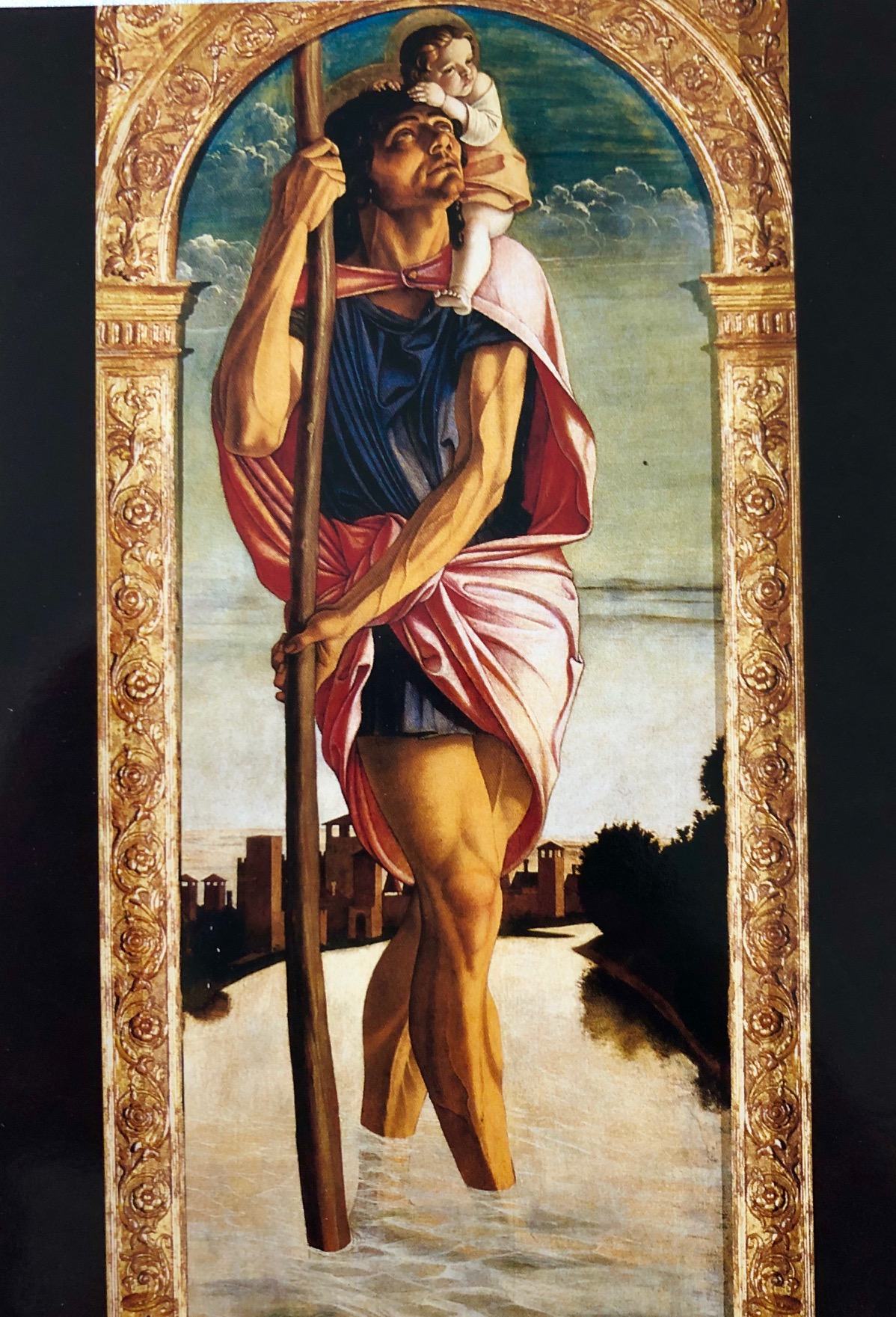
I’m not an art historian, but a little online research revealed these paintings were not made with oils, but tempera paint on wooden panels. This particular one shows the Christ child being carried by Saint Christopher, a 3rd-century church martyr executed by the Roman emperor at the time. The painting glowed under the light, and reminded me of another glowing Bellini at the Basilica dei Frari. It seems Bellini knew the tempera medium well.
We walked to the other painting we had been permitted to see at no charge.
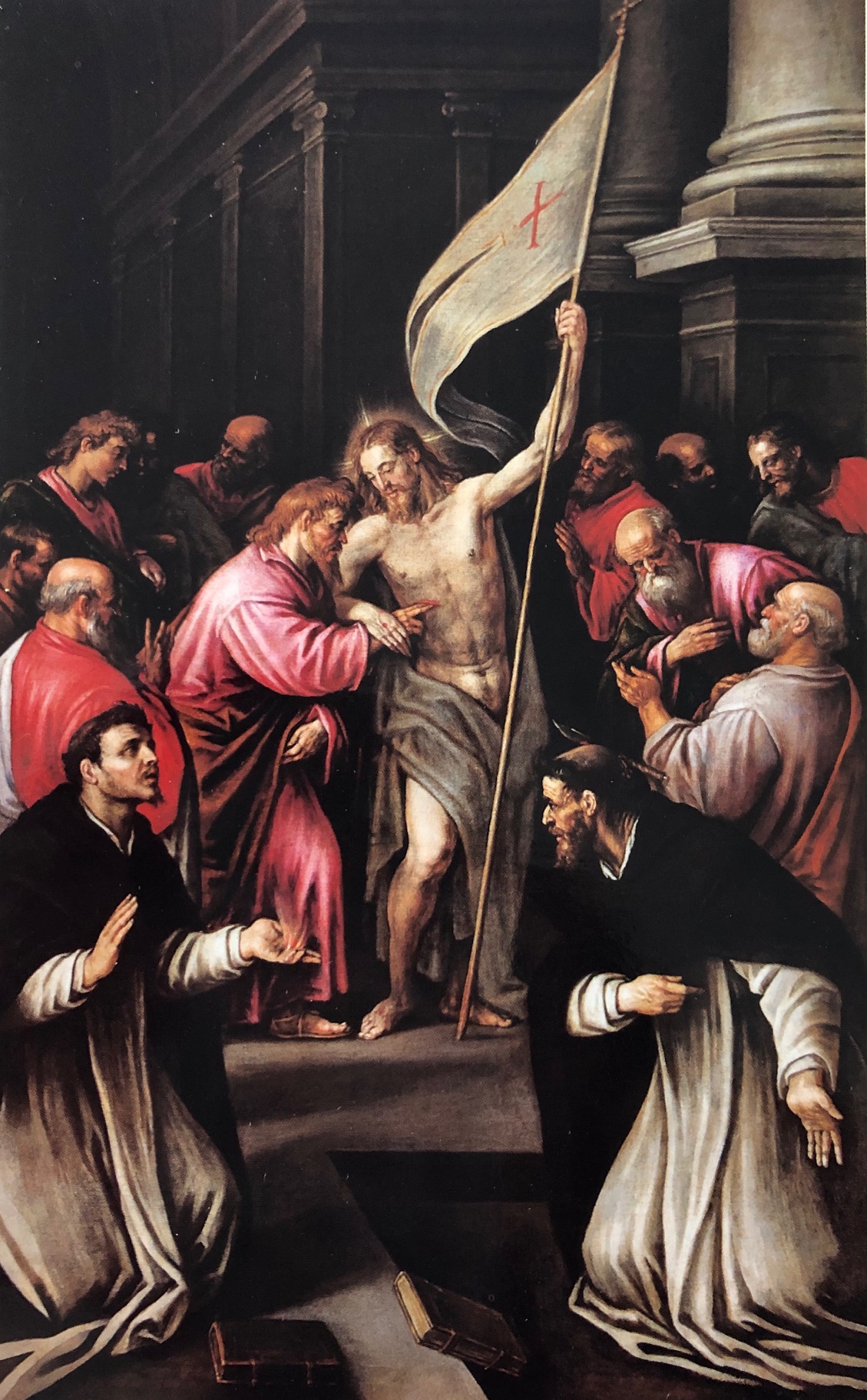
This second painting, L’incredulita di S. Tommasso by Leandro da Bassano was near the front of the church. It was dark and partially obscured by a screen of sorts. It shows Christ showing the doubtful Thomas his crucifixion wounds, proving the resurrection. I later learned that Leandro da Bassano was a famous painter who followed in his artist father’s footsteps and was later knighted by the Doge of Venice. Many of his works are confused with Tintoretto’s and are difficult to date.
We returned to the Bellini and switched on the lights one more time.
“Oh, thank you,” said a tourist staring at the painting who had entered after us.
We decided our visit was over. As we left, my daughter selected another postcard and paid. She offered the guard 5€ to thank him for allowing us in.
“No, no, you keep,” he said. “I just want to show you what you want to see. A postcard isn’t good enough. It’s how I make you… what to say… better tourists,” he said, smiling and shrugging his shoulders. I could tell he meant no offense by his remark.
He continued. “You know… when you’re inside a church here, tell the guard that you want to light a candle and say a prayer and they will let you in.”
Did I hear him correctly? I asked myself.
Still, I’m not Catholic, and using prayer as my ticket inside a church seems disingenuous. However, I did appreciate his candid tip and his enthusiasm for La Serenissima, the traditional name for the Venetian Republic.
We left the church and entered the campo, the large square outside. I knew I wouldn’t forget this brief encounter in a city coming to grips with the effects of mass tourism. Two weeks before, according to the blog La Venessiana, tugboats had allowed an out-of-control cruise ship to strike an occupied river cruise boat instead of Santa Maria della Salute. To compensate for the wear and tear that throngs of summer tourists wreak upon the city, officials are devising new tourism taxes.
In reflection, the guard at Basilica dei Santi Giovanni e Paolo was merely doing his part… politely doing what he could to help visitors he met to “be better tourists” in his city on the sea.
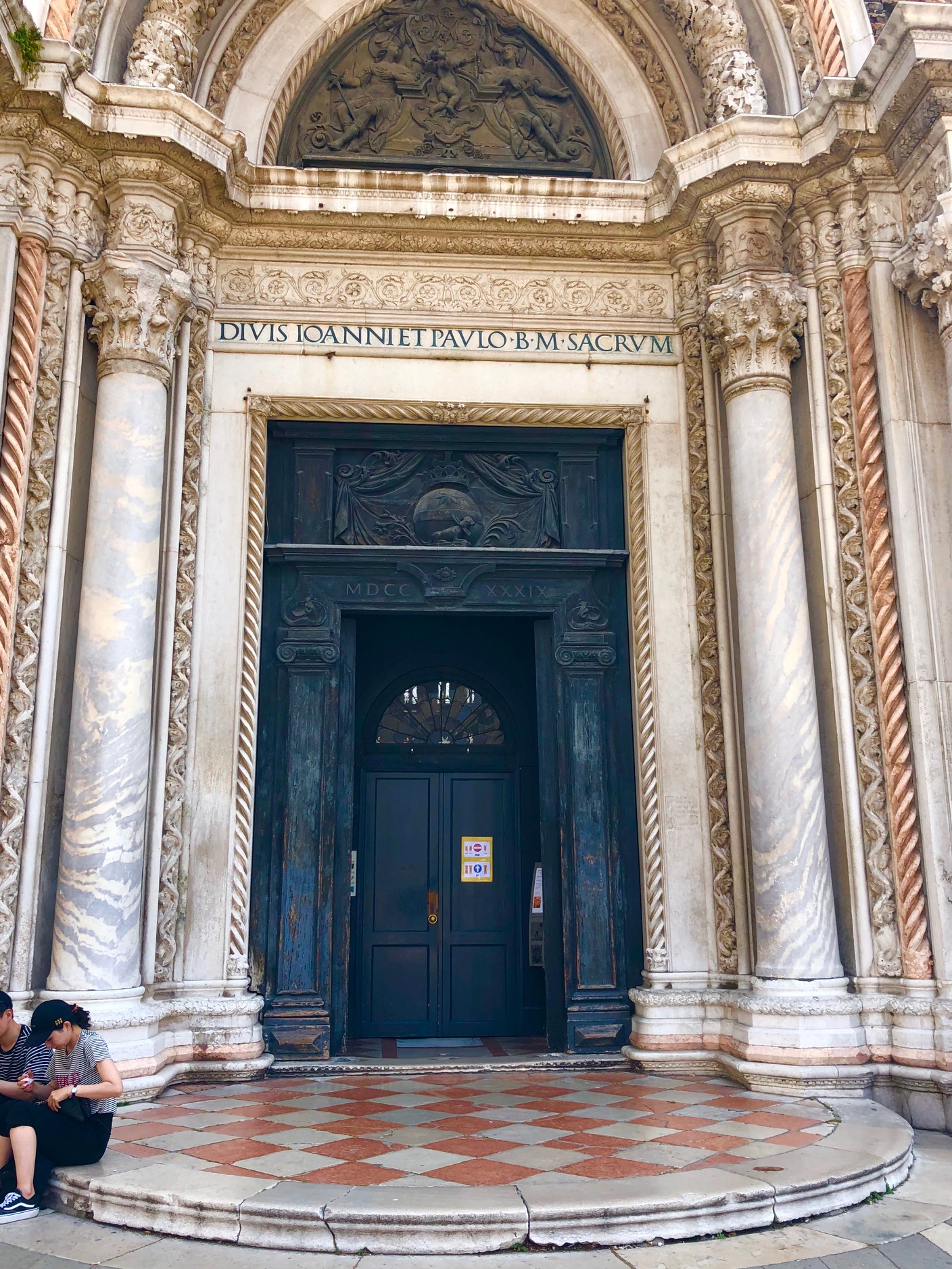
Featured Image: M. Yung

I’m betting that the question, “Wonder where the hospital is around here?” passes through the minds of most visitors to Venice… at least those visitors who stay on the island and think about where they would go if they twisted an ankle or suffered whiplash doing a double-take at an especially handsome gondolier.
Last Sunday, my daughter and I wound up at the hospital without really meaning to. We intended to go see the church, Basilica dei Santi Giovanni e Paolo (the Basilica of St. John and Paul). In 2017, I had purchased a little folding picture book of the top ten Venice sights and this church was on that list.
During the week that we visited back then, we simply didn’t get everything accomplished. Back home after our trip, I realized that if I was ever to return to Venice, this church would be on my list of sights to see.
And when one sees this church, one also has the opportunity to see the Venice hospital, the Ospedale SS Giovanni E Paolo Venice. That’s because the church is literally connected to the hospital building. You can enter the hospital from either the black front doors (as seen in the photo above) or you can enter from the backside, which borders the waters of the lagoon.
My daughter and I decided to take the water route around the back of the island. My daughter had never actually ventured on the vaporetto route past her Santa Elena stop, so this was a first-time experience for her, too.
Here’s the sign in the vaporetto bus stop that shows the stop for the Ospedale (Italian for hospital). Note the international symbol for hospital, “H,” below the line.


We traveled around the backside of the island to eventually arrive at the church; we didn’t realize it at the time, but the church is joined to the hospital.

Here are some more pictures from the vaporetto ride around to the hospital and the basilica.



According to The Venice Insider, the hospital grounds are not open for tourists. That being the case, I hesitated to take lots of pictures. However, I did snap a few. Here’s a picture of a modern-looking inner garden area you’ll walk through after leaving the vaporetto and walking through the first doors you come to.
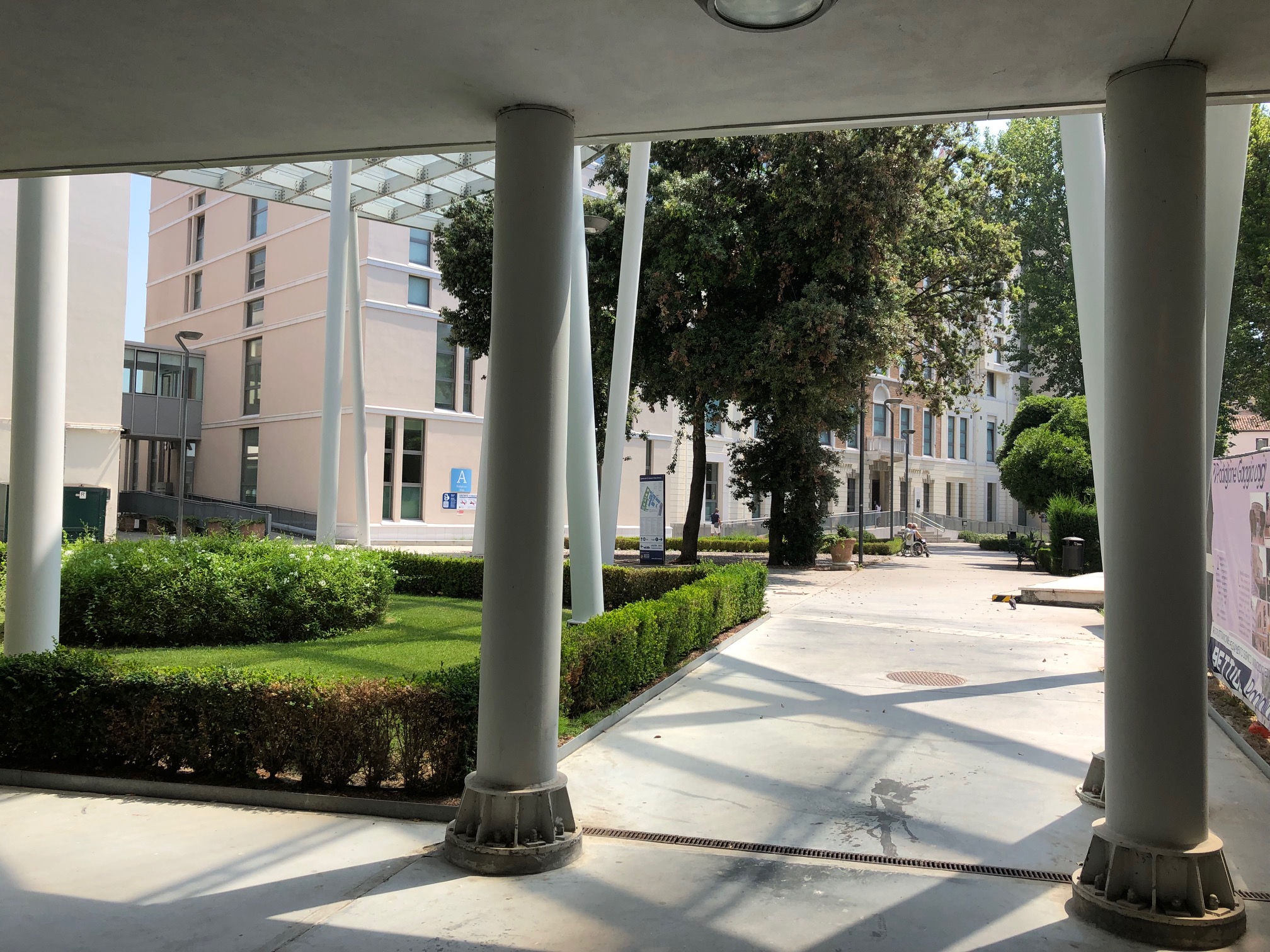
Katherine’s roommate had told us to look for the gardens with all the cats. We thought that this was the garden she meant. We were wrong, as you will soon see.
Before we would find the garden full of cats, we walked by the Emergency Room doors. Here it is, for all you ankle twisters or gondolier gawkers:

Keep walking past the ER and you will eventually arrive at a beautiful garden, surrounded by loggia walkways and filled with about a dozen stray cats.
Residents and visitors alike care for Venice’s many feral felines. The kitties are quite comfortable during the warmer months. I’ve read that the cat population can become a problem during cooler temperatures and that there are volunteer groups that help with the problem.


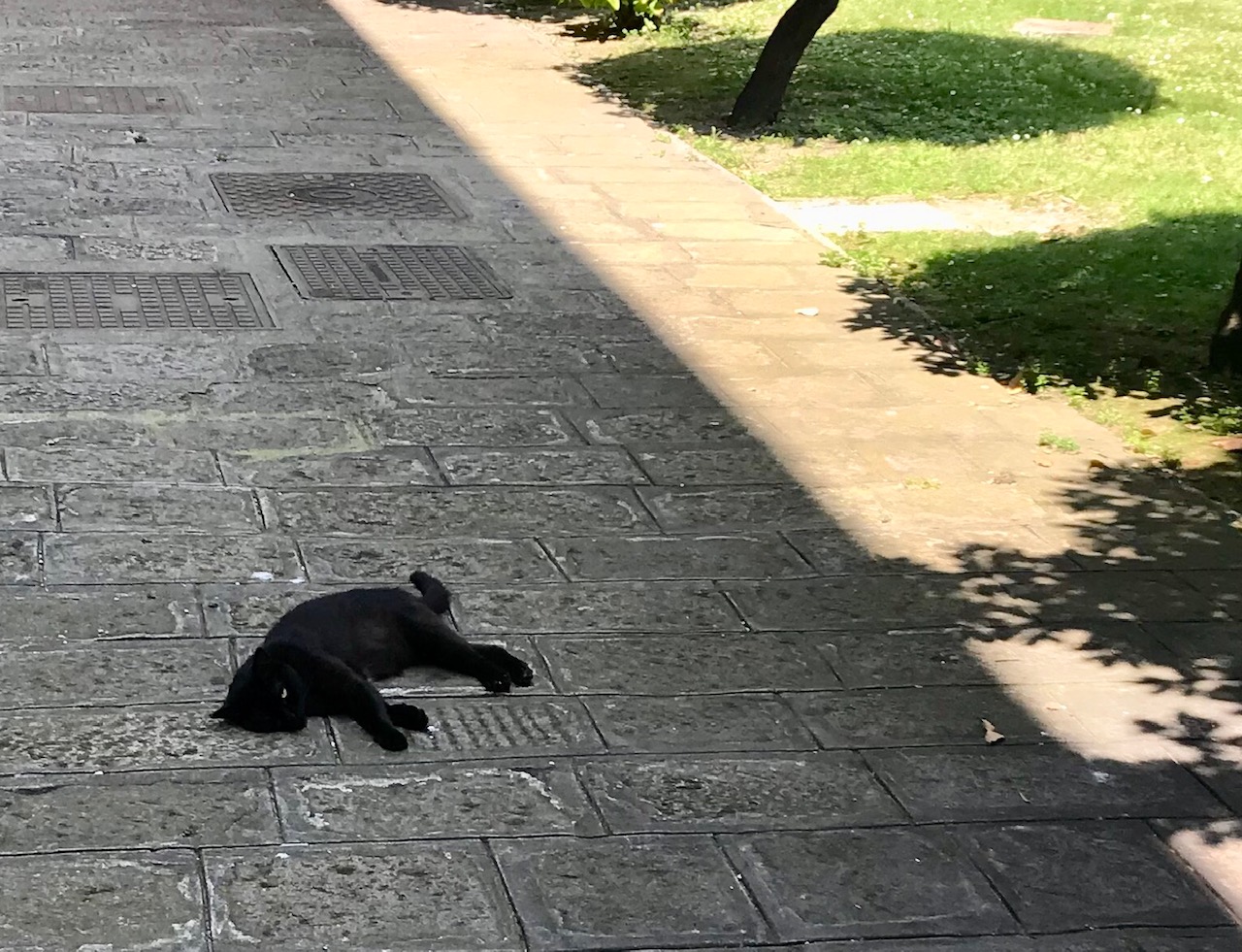
After you exit the cat garden, you’ll pass through an exit where you can continue on to the wards of the hospital or turn left to the Scuole Grande, which leads eventually leads outside to the campo with Basilica dei Santi Giovanni e Paolo.

If you continue down these steps, you will enter this grand entrance hall. There are doors and hallways that lead from this hall. This is the Scuole Grande (see caption above). At the end of this hall, is the front door of the hospital shown in the elaborate facade in the first picture of this article.

And this brings us to the front entrance of the hospital on the campo, the large square that is the “city center” of this area of Castello.

In effect, this post has brought you to the hospital from the backside along the water, to the very front door, which is shown in this photo at the far left (see the oval-topped dark door that blends in with the light post).
And this also brings us to the close of this post. I will continue this post tomorrow with our visit to the basilica where you will meet a die-hard Venetian who gave us some very good and timely advice on how to be “better tourists.”

In interesting times, artists create. In uninteresting times, artists still create. Regardless of the global political climate, the Venice Biennale—the Olympics of art where countries each exhibit in their own pavilion or exhibit space—continues. Sure, some countries may decline to participate from year to year or may be late in readying their exhibits (such as tumultuous Venezuela this year); however, for the Biennale… the show must go on.

If you’re unfamiliar with the Venice Biennale, here’s a quick summary from the Biennale website:
The Venice Biennale has been for over 120 years one of the most prestigious cultural institutions in the world. Established in 1895, the Biennale has an attendance today of over 500,000 visitors at the Art Exhibition. The history of the La Biennale di Venezia dates back from 1895, when the first International Art Exhibition was organized. In the 1930s new festivals were born: Music, Cinema, and Theatre (the Venice Film Festival in 1932 was the first film festival in history). In 1980 the first International Architecture Exhibition took place, and in 1999 Dance made its debut at La Biennale.
An over-arching theme characterizes each Biennale. This year’s theme, “May You Live in Interesting Times,” encourages people to avoid the quick judgment, the stereotype, the single-lens viewing of current world events.

According to Biennale President Paolo Baratta, “the expression ‘interesting times’ evokes the idea of challenging or even ‘menacing’ times, but it could also simply be an invitation to always see and consider the course of human events in their complexity, an invitation, thus, that appears to be particularly important in times when, too often, oversimplification seems to prevail, generated by conformism or fear.”
Another way to put it: allow art to show you the many ways of looking at the world.

Last Friday (June 14), I visited the Biennale with my daughter, who is an intern in the United States Pavilion. The United States’ participation is primarily a function of the Department of State, which “supports official U.S. participation at select international art exhibitions called biennales. The Department’s support ensures that the excellence, vitality, and diversity of American arts are effectively showcased abroad and provides an opportunity to engage foreign audiences to increase mutual understanding.” In other words, exhibiting at the Biennale is another way to build and maintain positive relationships around the world.
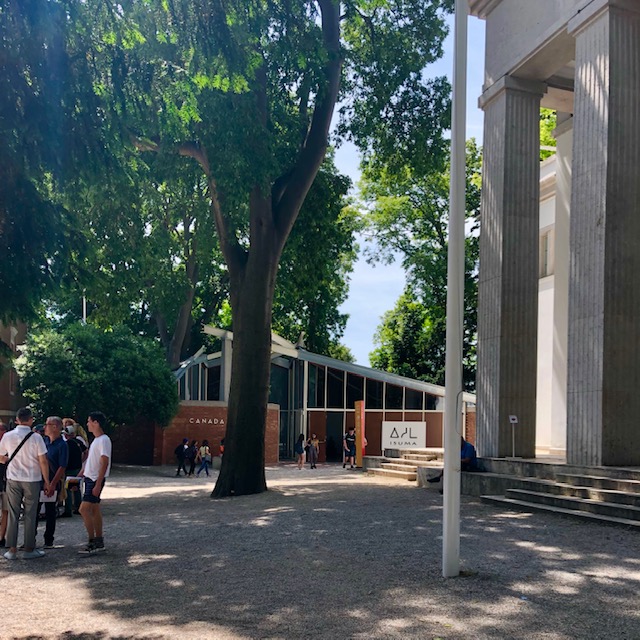
As for the U.S. Pavilion’s intern program, the Peggy Guggenheim Collection, a well-known modern art museum in Venice, handles the hiring of the interns who provide guarding of the exhibits, inform visitors about the various works, and generally are the main points-of-contact for visitors touring through the pavilions. (Two years ago, my daughter served an internship at the museum; when they issued a call for former interns interested in returning to work the Biennale, she quickly applied.)

We arrived at the portion of the show held on the ground of Venice’s Giardini (Italian for garden). Visitors can see another section of the show at the adjacent Arsenale. In addition, more pavilions are scattered throughout the city. For example, we walked by the door to the Mongolian exhibit in a dark, narrow street somewhere in the San Marco area of the city.
During our three-hour visit, we saw fourteen exhibits out of the 79 participating in the Biennale this year. That doesn’t sound like that many, does it? Especially when you know there are art lovers who allot several days to see all the exhibits. To them, I say, “Go you!”
However, since I only had four full days in Venice, and one of those was spent in Bologna (see my next post!), we prioritized.

Plus, we knew that a visit to the best gelato in town, Suso, was in order for the afternoon. This would require a thirty-minute vaporetto ride down the Grand Canal from the Giardini. Sheesh… the price we pay for good gelato!

Enjoy these photos! I’ve attempted to add some details in the captions and, looking back now, I should have written this post immediately after our visit to better capture the ambiance of our visit. But when one is in one of the most beautiful cities in the world, you want to get out and see it—not stay in and write about it.
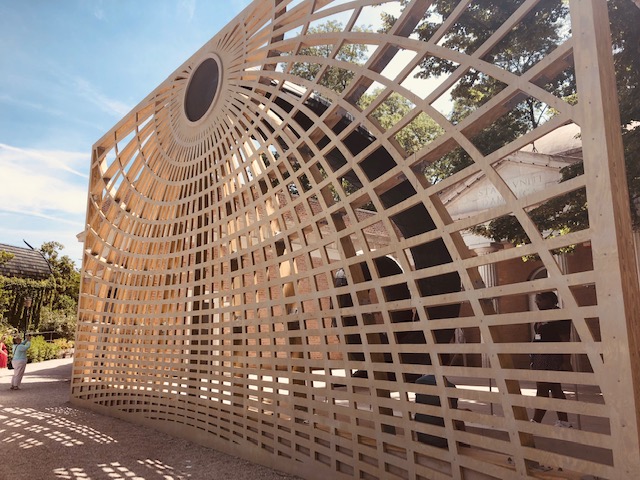


A




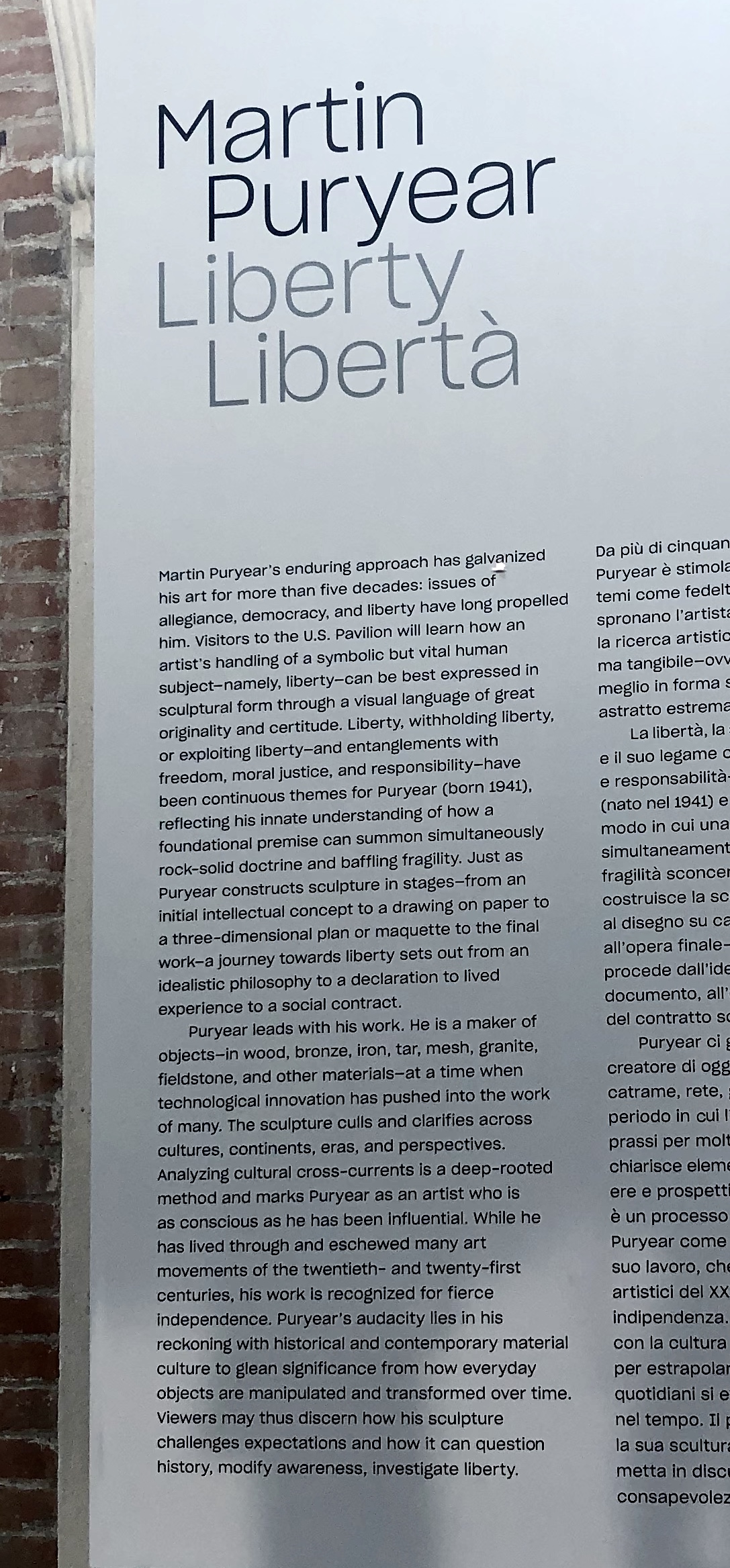



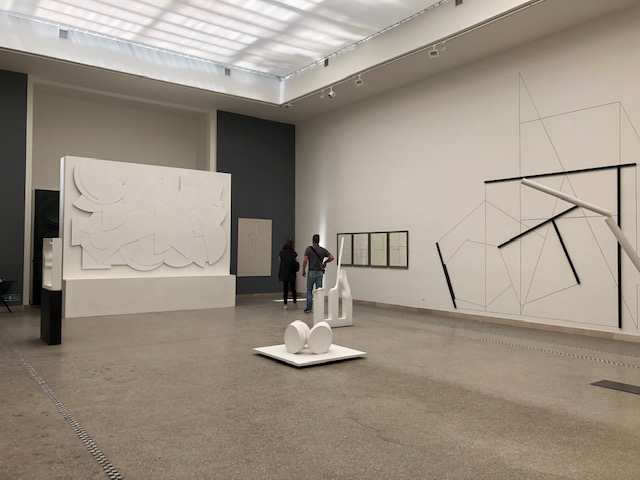


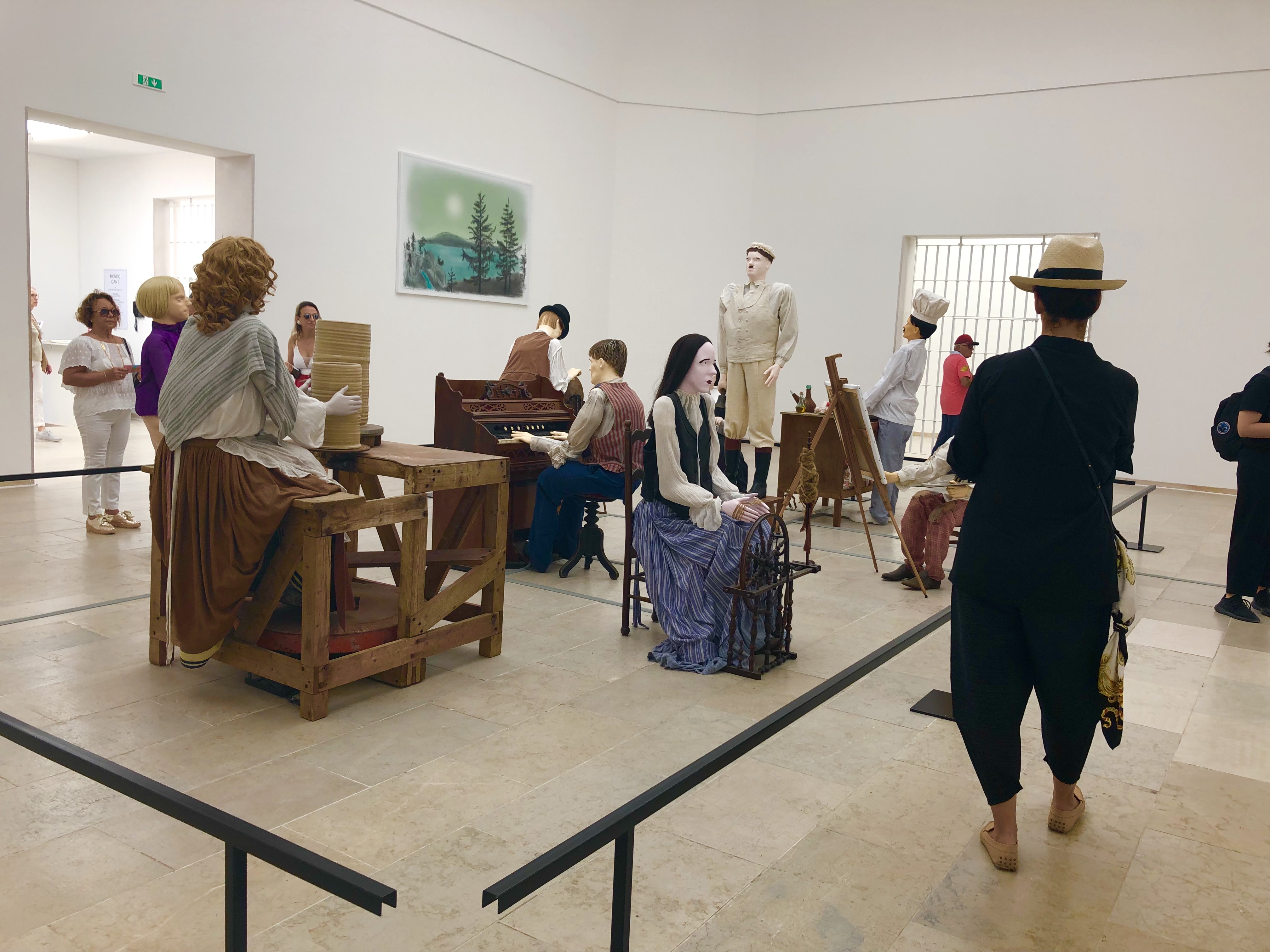




Thanks for reading! As you can see, there is too much to see at the Venice Biennale without spending days there. In addition, to really study the art and understand its motivation and full message deserves much more time than we were able to devote. Still, if you have the desire to see art on a global scale, the Venice Biennale is where you need to go. Click like if you enjoyed this post, and feel free to leave a comment or follow my blog for my next post from Bologna!